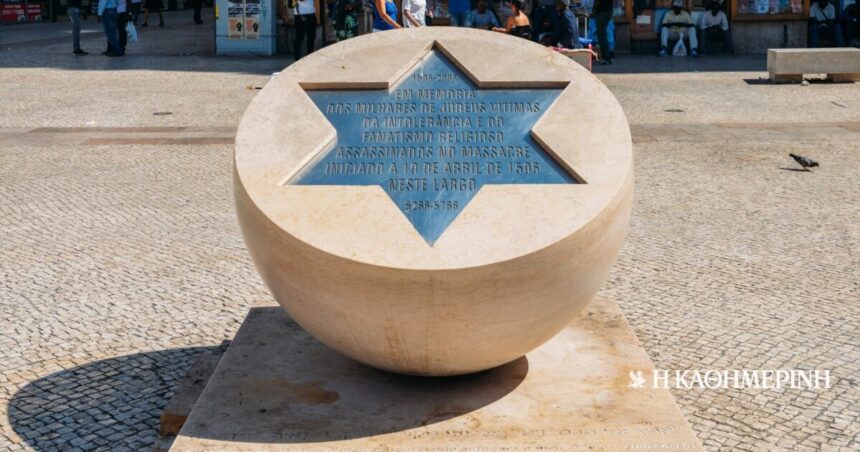Dramatic events occurred after the Portuguese King Emmanuel I ordered the forced conversation of the Jewish of his country. Had preceded (1492) the expulsion of Jews and Muslims from Spainat the initiative of its Catholic monarchs. After that, more than 90,000 Jews had been accepted in the Portugalas prominent members of the Jewish Community of Castile had negotiated with the King of Portugal to enter the exiles there, in return for the payment of high taxes.
Things changed for them when successor Manuel I married the princess of Spain Isabella. A clause in the wedding contract required the expulsion of the “heretics” – Mauritan and Jews – from the Portuguese territory. The Portuguese king, though he did not want to lose the Jewish wealth, in the end, on the eve of the marriage, signed the decree providing for the expulsion of the “heretics” within 10 months. He hoped that many would be baptized, albeit typically, Christians. However, the majority of the Jews, who had left Spain a few years ago so that they would not be forced to abandon their faith, decided to leave the country. Faced with the possibility of losing the significant funds provided by their stay in the country, The king issued a new decree, which banned their departure from Portugal and forced them to convert to Catholicism. In October 1497, those who had not yet done so were brutally baptized. The overwhelming majority, however, continued to exercise Judaism in secret.
The plague epidemic and hunger had ruined Lisbon, where more than 130 people were dying daily.
The events of April 1506 developed quickly and violently. The plague epidemic and hunger had ruined the Lisbon from October of the previous year. Since January, the situation had worsened further, with more than 130 people dying everyday. Manuel and his courtyard had moved away from the city, leaving it virtually uncontrollable.
The first acts of violence occurred on April 19, 1506. In the monastery of St. Dominic, while the faithful prayed to end their misfortune, someone swore that he saw a glow illuminate the altar – something that was soon interpreted as a sign of miracle. Some, however, expressed distrust. Among them a neo -Christian, that is, a person who had recently been converted to Catholicism by Judaism. The indignation of the faithful, motivated by the Dominican monks, immediately flared against him. The former Jew was silenced and beaten to death by the angry crowdwhich then burned down what was left of his body.
Violence quickly spread throughout the city.
This event followed three days of slaughteras violence quickly spread throughout the city. In groups, the crowd was looking for the converts, whom they slaughtered without any distinction, and looted their homes.
The troops and officials of the king who arrived in Lisbon to restore order had special powers for the punishment of those involved in the slaughter. The property of the guards was confiscated, while many were arrested and hangedincluding the Dominican monks.
The slaughter of Lisbon was not the only such incident. Thirty years later, The sacred examination would be established And it would operate its court in the Portuguese territory, which forced thousands of prosecutions to leave the country. Some fled to northern Europe, where they founded Sefardite communities in Amsterdam, Hamburg and Antwerp. Others settled in territories of the Ottoman Empire, even in the Holy Land.
Column: Myrto Katsigera, Vassilis Minakakis, Antigoni-Despina Poumenidou, Athanasios Syroplakis




